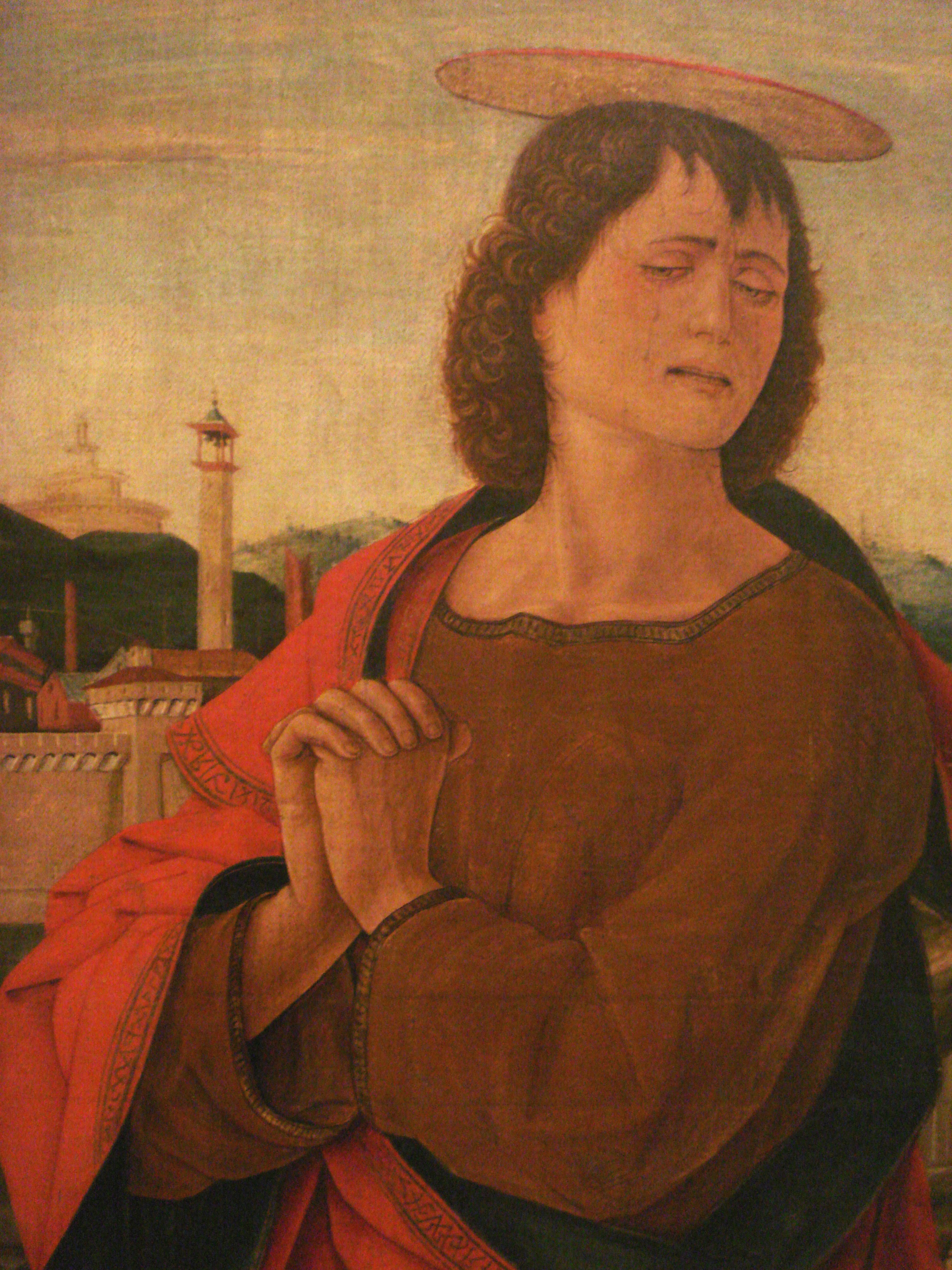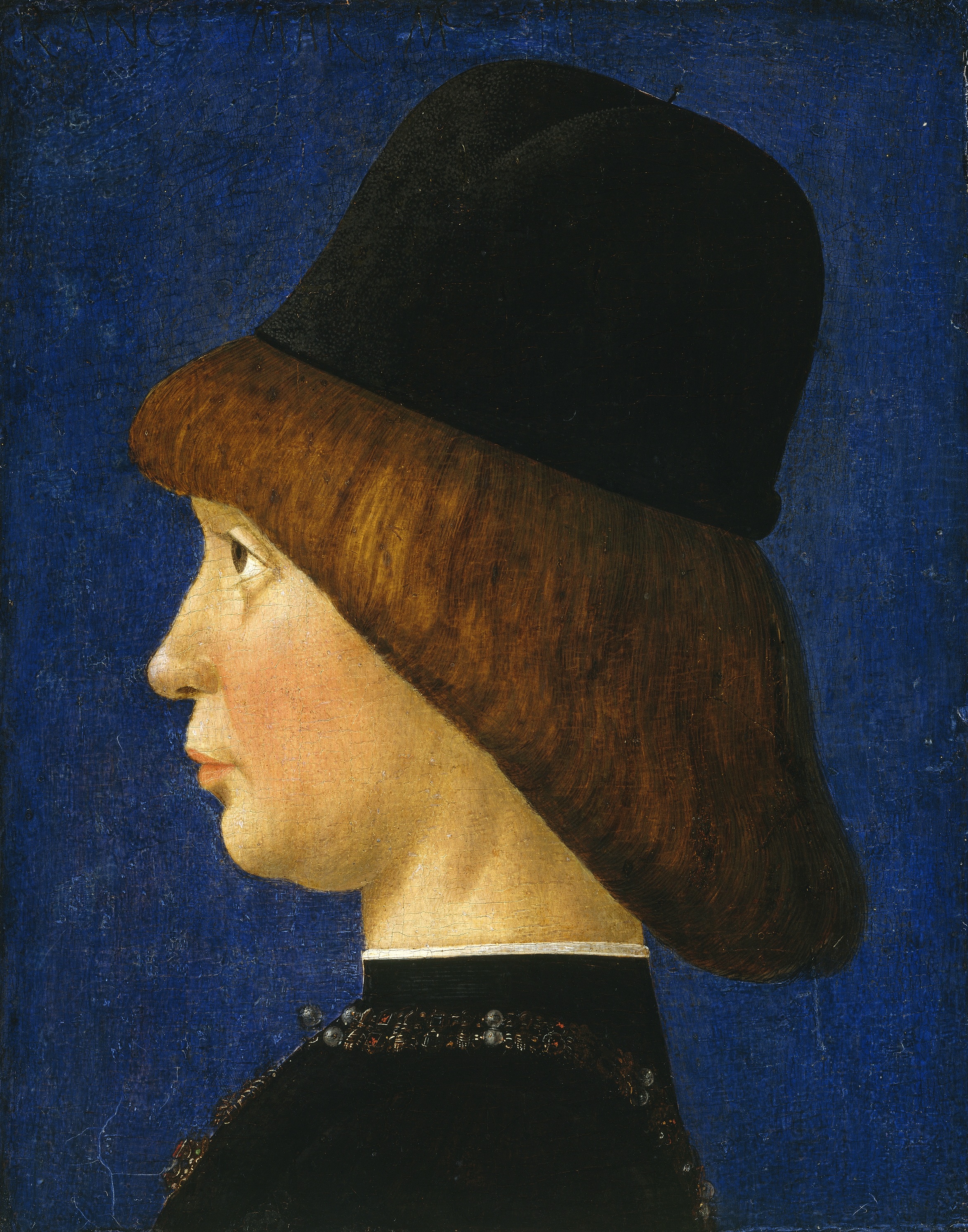|
Palazzo Dei Diamanti
Palazzo dei Diamanti is a Renaissance palace located on Corso Ercole I d'Este 21 in Ferrara, region of Emilia Romagna, Italy. The main floor of the Palace houses the Pinacoteca Nazionale di Ferrara (National Painting Gallery of Ferrara). History To accommodate the growth of Ferrara, in 1492 the Duke Ercole I d'Este demolished the medieval walls of the city on the north, and had the court architect, Biagio Rossetti, design an urban expansion known as the '' Addizione Erculea''. Rosetti was commissioned by Sigismondo d'Este, brother of the Duke Ercole I, to build this palace at the prestigious intersection of what was to be the Decumanus Maximus (now encompassing Corsi Porta Po, Biagio Rossetti, and Porta Mare) and Cardo Maximus (Corso Ercole I d'Este) of the "urban addition". It was built between 1493 and 1503. Used as a residential home by the Este family and, starting in 1641, by the Villa marquis, in 1832 the palace was acquired by the municipality of Ferrara to house the Nationa ... [...More Info...] [...Related Items...] OR: [Wikipedia] [Google] [Baidu] |
Art Gallery
An art gallery is a room or a building in which visual art is displayed. In Western cultures from the mid-15th century, a gallery was any long, narrow covered passage along a wall, first used in the sense of a place for art in the 1590s. The long gallery in Elizabethan and Jacobean architecture, Jacobean houses served many purposes including the display of art. Historically, art is displayed as evidence of status and wealth, and for religious art as objects of ritual or the depiction of narratives. The first galleries were in the palaces of the aristocracy, or in churches. As art collections grew, buildings became dedicated to art, becoming the first art museums. Among the modern reasons art may be displayed are aesthetic enjoyment, Visual arts education, education, historic preservation, or for marketing purposes. The term is used to refer to establishments with distinct social and economic functions, both public and private. Institutions that Preservation (library and archive), ... [...More Info...] [...Related Items...] OR: [Wikipedia] [Google] [Baidu] |
Vicino Da Ferrara
Vicino da Ferrara (1432–1509) was an Italian painter of the 15th-16th century. He is suspected to be identical to Baldassare d'Este from Reggio Emilia, also known as Baldassare da Reggio. References Gallery File:Borso d'Este.jpg, Portrait of Borso d'Este, attributed to Vicino da Ferrara. Pinacoteca of the Sforza Castle in Milan, Italy Italy, officially the Italian Republic, is a country in Southern Europe, Southern and Western Europe, Western Europe. It consists of Italian Peninsula, a peninsula that extends into the Mediterranean Sea, with the Alps on its northern land b .... 15th-century Italian painters Italian male painters 16th-century Italian painters Painters from Ferrara 1432 births 1509 deaths {{Italy-painter-15thC-stub ... [...More Info...] [...Related Items...] OR: [Wikipedia] [Google] [Baidu] |
Giovanni Bellini
Giovanni Bellini (; c. 1430 – 29 November 1516) was an Italian Renaissance painter, probably the best known of the Bellini family of Venetian painters. He was raised in the household of Jacopo Bellini, formerly thought to have been his father, but now that familial generational relationship is questioned.; An older brother, Gentile Bellini was more highly regarded than Giovanni during his lifetime, but the reverse is true today. His brother-in-law was Andrea Mantegna. Giovanni Bellini was considered to have revolutionized Venetian painting, moving it toward a more sensuous and colouristic style. Through the use of clear, slow-drying oil paints, Giovanni created deep, rich tints and detailed shadings. His sumptuous colouring and fluent, atmospheric landscapes had a great effect on the Venetian painting school, especially on his pupils Giorgione and Titian. The Bellini (cocktail), Bellini cocktail is named in his honour. Life Early career Giovanni Bellini was born in Veni ... [...More Info...] [...Related Items...] OR: [Wikipedia] [Google] [Baidu] |
Giuseppe Mazzuoli (c
Giuseppe Mazzuoli may refer to: * Giuseppe Mazzuoli (c. 1536 – 1589), Renaissance painter known as ''il Bastaruolo'' * Giuseppe Mazzuoli (1644–1725), sculptor of Rome * Giuseppe Maria Mazzuoli, an Italian sculptor and stucco artist {{DEFAULTSORT:Mazzuoli, Giuseppe ... [...More Info...] [...Related Items...] OR: [Wikipedia] [Google] [Baidu] |
Jacopo Bambini
Jacopo Bambini (1582–1629, also known as Giacomo Bambini) was an Italian painter of the Baroque period, active mainly in Ferrara. He trained with Domenico Mona. Along with Giulio Croma (Giulio Cromer), he set up a painter's academy in Ferrara. He painted three altarpieces for the cathedral: a ''Flight into Egypt'', an ''Annunciation'', and a ''Conversion of St. Paul''. He died at Ferrara. An account of his other works will be found in Barotti's ''Future e Scolture di Ferrara''. References * * 1582 births 1629 deaths 16th-century Italian painters Italian male painters Italian Baroque painters 17th-century Italian painters Painters from Ferrara {{Italy-painter-17thC-stub ... [...More Info...] [...Related Items...] OR: [Wikipedia] [Google] [Baidu] |
Baldassarre D'Este
Baldassare Estense (ca. 1443 – after 1504) was an Italian painter. He was born in Reggio, has been supposed to have been an illegitimate scion of the house of Este, since no mention of his father's name ever occurs in contemporary records, whilst he was called 'Estensis,' and received unusual promotion and rewards from the Dukes of Ferrara. He was a pupil of Cosimo Tura, and was also a medallist. In 1469 he painted the likeness of Borso I, and was ordered to present it in person to the Duke of Milan. From 1471 to 1504 he was a salaried officer at the court of Ferrara, living first in Castel Nuovo, for which he painted a canvas that has perished, and afterwards in Castel Tedaldo, of which he was the governor. In 1483 he painted the portrait of Tito Strozzi, now in the Costabili Gallery at Ferrara. His will, dated 1500, is in the archives of Ferrara, but the exact date of his death is unknown. File:Baldassare Estense 002.jpg, Portrait of a young man, now in the Museo Correr ... [...More Info...] [...Related Items...] OR: [Wikipedia] [Google] [Baidu] |
Giuseppe Avanzi
Giuseppe Avanzi (30 August 1645 – 29 May 1718) was an Italian painter of the Baroque period, active mainly in Ferrara. He trained with Cattaneo Cattaneo ( is an Italian surname. Geographical distribution As of 2014, 81.2% of all known bearers of the surname ''Cattaneo'' were residents of Italy (frequency 1:1,232), 9.0% of Argentina (1:7,742), 2.8% of Switzerland (1:4,802), 1.9% of the Unit ... in Ferrara. He was a prolific painter of religious canvases in his natal city, including for the Certosa of Ferrara and the church of the Madonna della Pieta. References * External linksCensus of Ferrarese Paintings and DrawingsDizionario dei pittori. Biografie di artisti ferraresi del Seicento {{DEFAULTSORT:Avanzi, Giuseppe 1645 births 1718 deaths People from the Province of Ferrara 17th-century Italian painters Italian male painters 18th-century Italian painters Italian Baroque painters Painters from Ferrara 18th-century Italian male artists ... [...More Info...] [...Related Items...] OR: [Wikipedia] [Google] [Baidu] |
Amerigo Aspertini
Amico Aspertini, also called Amerigo Aspertini (* cca 1474, Bologna – 1552, Bologna), was an Italian Renaissance painter and sculptor whose complex, eccentric, and eclectic style anticipates Mannerism. He is considered one of the leading exponents of the Bolognese School of painting. Biography He was born in Bologna to a family of painters (including Giovanni Antonio Aspertini, his father, and Guido Aspertini, his brother), and studied under masters such as Lorenzo Costa and Francesco Francia. He traveled to Rome with his father in 1496, and is briefly documented there again between 1500 and 1503, returning to Bologna thereafter and painting in a style influenced by Pinturicchio and Filippino Lippi (whose work the critic Roberto Longhi suggested n ''Officina ferrarese'', 1934he may have seen in Florence before 1500). To his Roman years belong at least two collections of drawings, the "Parma Notebook" (''Taccuino di Parma'') and the Wolfegg Codex. In Bologna in 1504, he join ... [...More Info...] [...Related Items...] OR: [Wikipedia] [Google] [Baidu] |
Michelangelo
Michelangelo di Lodovico Buonarroti Simoni (6March 147518February 1564), known mononymously as Michelangelo, was an Italian sculptor, painter, architect, and poet of the High Renaissance. Born in the Republic of Florence, his work was inspired by models from classical antiquity and had a lasting influence on Western art. Michelangelo's creative abilities and mastery in a range of artistic arenas define him as an archetypal Renaissance man, along with his rival and elder contemporary, Leonardo da Vinci. Given the sheer volume of surviving correspondence, sketches, and reminiscences, Michelangelo is one of the best-documented artists of the 16th century. He was lauded by contemporary biographers as the most accomplished artist of his era. Michelangelo achieved fame early. Two of his best-known works, the ''Pietà (Michelangelo), Pietà'' and ''David (Michelangelo), David'', were sculpted before the age of 30. Although he did not consider himself a painter, Michelangelo created ... [...More Info...] [...Related Items...] OR: [Wikipedia] [Google] [Baidu] |
Bastianino
Sebastiano Filippi (or Bastianino; c. 1536 – 23 August 1602) was an Italian late Renaissance – Mannerist painter of the School of Ferrara. Biography He was born in Lendinara to a painter, Camillo Filippi, who had worked under Dosso Dossi. He initially likely apprenticed with his father and brother ( Cesare Filippi), and is thought to have worked with them when they painted a processional standard ''Gonfalone'' for the ''Oratorio dell'Annunziata'' in Ferrara. He left Ferrara, dominated by the likes of Dosso Dossi, Il Garofalo, and Girolamo da Carpi, as a young man to find work in Rome. In Rome, he is said to have been recommended by Jacopo Bonacossi, the Ferrarese doctor of the Pope, to enter training with Michelangelo. He worked for seven years under the master in Rome, then returned to Ferrara in 1553, where he enjoyed the general patronage of the arts by Duke Alfonso I d'Este and subsequently his son Alfonso II. He painted a ''Madonna with Peter and Paul'' for the churc ... [...More Info...] [...Related Items...] OR: [Wikipedia] [Google] [Baidu] |
Dosso Dossi
Giovanni di Niccolò de Luteri, better known as Dosso Dossi ( 1489–1542) was an Italian Renaissance painter who belonged to the School of Ferrara, painting in a style mainly influenced by Venetian painting, in particular Giorgione and early Titian. From 1514 to his death, he was court artist to the House of Este, Este Dukes of Ferrara and of Modena, whose small court valued its reputation as an artistic centre. He often worked with his younger brother Battista Dossi, who had worked under Raphael. He painted many mythological subjects and allegories with a rather dream-like atmospheres, and often striking disharmonies in colour. His portraits also often show rather unusual poses or expressions for works originating in a court. Biography Dossi was born in San Giovanni del Dosso, a village in the province of Mantua. His early training and life are not well documented; his father, originally of Trento, was a bursar (''spenditore'' or ''fattore'') for the Dukes of Ferrara. He may ha ... [...More Info...] [...Related Items...] OR: [Wikipedia] [Google] [Baidu] |
Il Garofalo
Benvenuto Tisi (; 1481September 6, 1559), also known as Il Garofalo (), was a Late-Renaissance-Mannerist Italian painter of the School of Ferrara. Garofalo's career began attached to the court of the Duke d'Este. His early works have been described as "idyllic", but they often conform to the elaborate conceits favored by the artistically refined Ferrarese court. His nickname, ''Garofalo'', may derive from his habit of signing some works with a picture of a carnation (in Italian, , with a few dated variants). Biography Early training Born in Canaro near Ferrara, Tisi is claimed to have apprenticed under Panetti and perhaps Costa and was a contemporary, and sometimes collaborator with Dosso Dossi. In 1495 he worked at Cremona under his maternal uncle Niccolò Soriano, and at the school of Boccaccino, who initiated him into Venetian colouring. He may have spent three years (1509–1512), in Rome. This led to a stylized classical style, more influenced by Giulio Romano. Invi ... [...More Info...] [...Related Items...] OR: [Wikipedia] [Google] [Baidu] |







